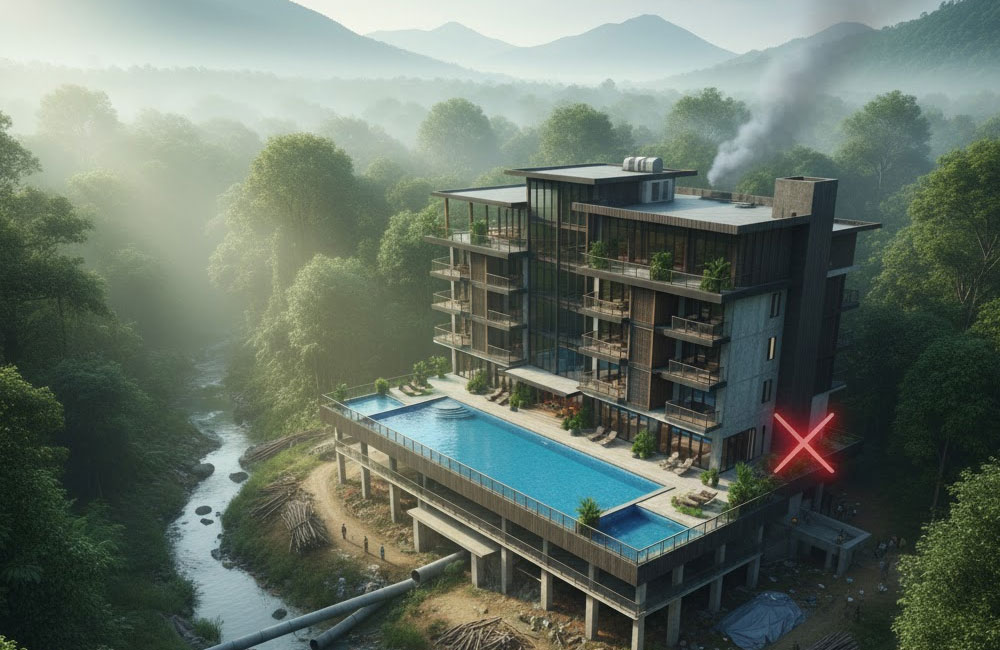Local residents and environmental groups are sounding the alarm after what they say is the clandestine clearing of roughly one acre of peripheral forest to lay foundations for a hotel on the edge of the Sinharaja World Heritage area.
The site identified by villagers as part of the Nildeniya (Nilgala) reserve near Suriyakanda and Kadu Muduwa falls within a legally protected buffer that was gazetted in 2011, and community leaders warn the work is already damaging a vital high-altitude biodiversity zone and the springs that supply nearby villages.
Field accounts gathered from residents and the chairman of the Nildeniya Pooja Water Society describe heavy-handed tree felling and foundation work immediately adjacent to transmission towers and inside a zone covered by the Soil Conservation Act.
Villagers say the site includes headwater catchments that feed drinking water supplies for Suriyakanda and Kadu Muduwa fragile hydrological systems that are extremely sensitive to vegetation loss and soil disturbance.
The community has filed complaints with the Suriyakanda Police and notified the Department of Forest Conservation, the Land Reclamation Commission and the Kolonna Divisional Secretariat, seeking urgent intervention.
This episode echoes earlier confrontations over infrastructure and tourism development around Sinharaja. In recent year’s petitions and media exposes flagged illegal roads and hotel proposals inside the Sinharaja periphery, prompting public outcry and defensive statements from government departments denying formal approvals.
Environmental campaigners argue those denials often fall short of stopping on-the-ground destruction, which proceeds via local land grabs or approvals by lower-level authorities that circumvent ecological safeguards.
Why this matters: Sinharaja is one of Sri Lanka’s last extensive tracts of low-country rainforest and a globally recognized reservoir of endemic species. Even peripheral clearances degrade its ecological integrity by fragmenting habitat, opening invasion pathways, altering microclimates and disrupting groundwater recharge effects that accumulate and amplify the island’s broader problem of falling forest cover.
Once headwater vegetation is removed, streamflow becomes flashier, dry-season baseflows decline and sediment loads rise outcomes that harm both biodiversity and human water security.
Legally and politically, the incident raises several immediate questions: who authorized or tolerated the clearance; whether the site truly lies inside gazetted reserve boundaries; whether enforcement agencies will act decisively; and whether local land records have been manipulated to mask illegal transfers.
The persistence of such episodes suggests gaps in on-the-ground monitoring, slow legal recourse and patchy coordination between conservation, land and local government bodies.
If the state fails to stop this encroachment, the damage will extend beyond one acre. Losses to Sinharaja’s peripheral forests are losses to Sri Lanka’s natural capital biodiversity, water security and ecotourism potential and they erode the credibility of protections surrounding a UNESCO site.
Authorities should immediately publish boundary maps, suspend all works, investigate land title transfers, and restore cleared areas under supervision of independent ecologists. For the communities that depend on the springs below, time is not on their side.

Leave your comments
Login to post a comment
Post comment as a guest